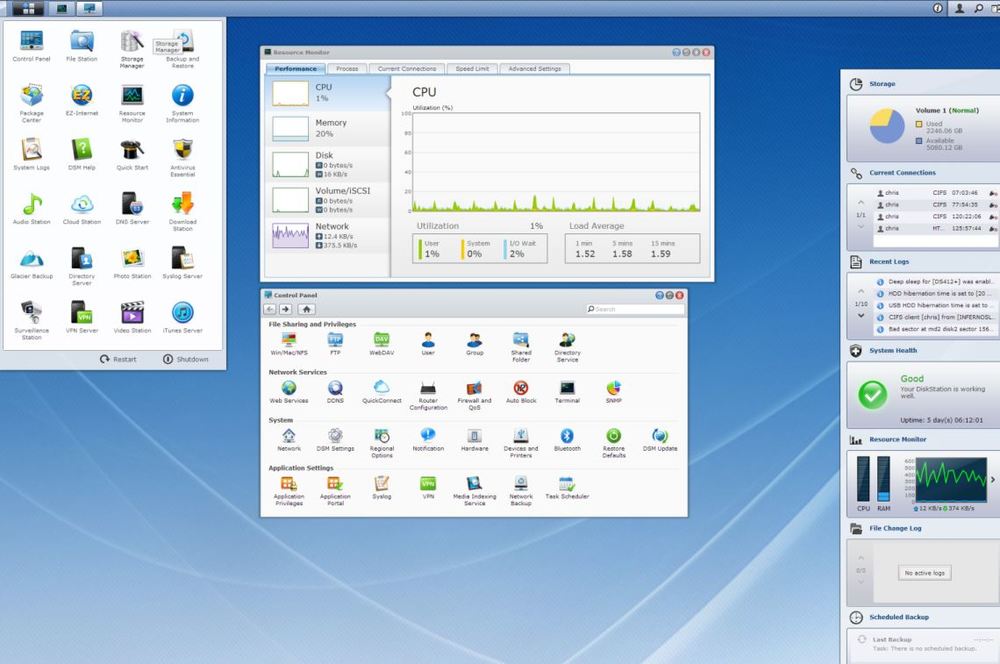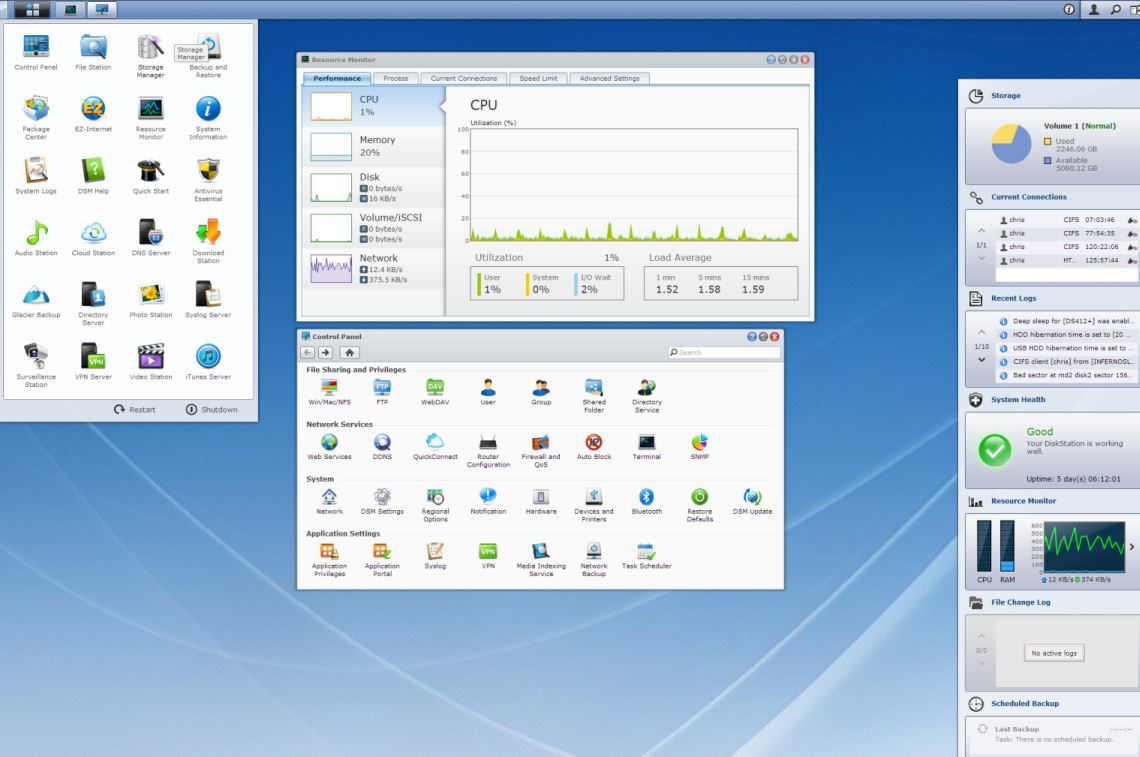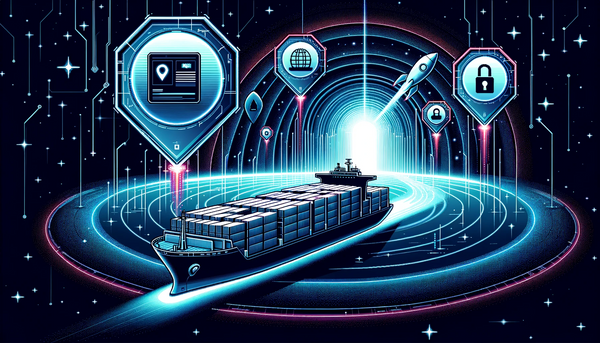Why and how I'm taking back the cloud - Part 1: Setup
What is The Cloud? Well, to me, it's the internet. It's the stream of electrons that tells Blizzard where my level 90 pally is in Azeroth as I'm WASD'ing around on my home computer.

What is The Cloud? Well, to me, it's the internet. It's the stream of electrons that tells Blizzard where my level 90 pally is in Azeroth as I'm WASD'ing around on my home computer. It's the stretches of fiber optic cable strung across the Oceans. It's Skynet. What's great about this incredible network that we all share, at least to me, are the fantastic services built on top of it. They are so amazing and simple that nearly all of us rely entirely on them daily for our personal and professional lives. It's also cheap. They are so cheap that most things are often free. Who do you know that pays for personal email, personal photo sharing, and even personal PC backup? And I have to say; free is a pretty good price. Even if something costs, it's typically a nominal $10 or less per month for unlimited _ (fill in the blank). The point is, I love the public cloud software as a service world we live in now and have fully embraced it. What, you buy records? CDs for me. CDs? Just buy it on iTunes. Buy it? Pay $10 monthly on Spotify/Xbox/Rdio/Slacker/Beats for all 20+ million.
But I'm at a time when the thrill has worn off a bit, questions are mounting, and some broken promises of the cloud are starting to pile up. What about privacy and accessibility? What of the promise of digital ownership and unimpeded and equal access to the internet? Questions of why SkyDrive is looking at my pictures, why Gmail is scanning my messages, or why I can't play my purchased iTunes movie on my Android phone. Why can't I have music offline on more than 3 devices or download my "purchased" Vudu hdx movie to my tablet? The basic answer to most of these questions is that it's not yours. At least in the same sense that most of us think about property. You agree to terms of service with varying restrictions every time you sign up, purchase, or upload your data. You also agree that should you not comply with the terms, your data or access to that data could be compromised. Granted, every agreement is different, but these themes remain the same. And for most of us, it's perfectly fine and something we blindly agree to in the name of simplicity. I have never personally violated or been thought to violate terms on any service I've used, so it has certainly worked for me thus far. But why should I compromise so much when it is MY data? Why can't I have privacy, pain-free accessibility, and ownership?

What can be done for a cloud-loving, privacy-conscious person like myself? Well, as it turns out, a lot! Home servers and the private cloud are coming back in a big way! Network-attached storage (NAS) devices, wireless routers, media streamers, personal encryption, etc., have never been cheaper and easier to set up. Because, let's face it, the cloud is complex. You've got servers, hard drives, IP addresses, terabytes, redundancy, firewalls, port forwarding, and more. Because of this complexity and cost, I abandoned my home server farm many years ago for the public rented version that most of us use today. Thankfully, that's not the case anymore. For a small financial and time investment, you can more or less replicate nearly all of these services with one inexpensive NAS device and an off-the-shelf wireless router. But wait, there's more! You'll find it easier to host things like your own DNS, VPN Server, Mail, and others without using the public cloud as your primary resource...maximizing your investment even further.
Now on to the setup!
Synology DS412+ NAS
All Synology does is make NAS devices. They range from small devices that sit right on your desk up to rack-mounted 12-bay monsters. They are not the only company out there making great NAS devices, mind you, but after my exhaustive research, this is the model I settled on. My only runner-up is the 5-bay Drobo 5N which could easily be the one for you based on your individual needs. The main reason I settled on this brand was its reputation for making a great product with excellent consumer reviews and its easy-to-use interface, and its rich app ecosystem. Under the hood, we're talking about a Linux server OS running on a dual-core x86 Atom processor with 1 GB of ram. Which, for a device that's primary responsibility is fast data transfer with fast data protection and redundancy, is plenty of horsepower. I also considered the less expensive DS413j model, but ultimately wanted the flexibility of having the x86 processor and the additional speed and connectivity that the DS412+ provided. For the developer minded, the x86 processor means frameworks like Mono, Java, and others run pretty well out of the box, leaving open-ended customization. For the IT-minded, the dual gigabyte NICs and the USB 3 + eSATA ports mean configuring things like link aggregation, QoS, and expanding with portable storage are all easily configured and well supported.
Software
The heart and soul of this device, however, lies in its OS, dubbed DiskStation Manager (DSM). This interface allows you to customize the NAS to your specific needs. I won't go into too many specifics since their site lays that out quite nicely, but I will say that this is where you will find the alternative services to the public cloud right on your home network. File, Music, and Photo sharing services, all with external accessibility from the web, will have desktop and mobile support. So you can keep that ease of sending a link to share photos while controlling precisely who can see and access those photos from your network...without needing to be an "IT person" or someone who "does computers" as my family insists on describing what my profession is. I like em, but let's not go crazy.
My name is Chris and I do computers!

Storage
I've added Three 4 Terabyte Western Digital Red NAS Hard drives. This new breed of drive (Seagate has its version also) is specifically designed for RAID-based NAS systems. The Red line is the recommended drive for 5-bay or less systems. The basic idea behind using a NAS drive vs an off-the-shelf spinning drive is that they will provide more reliability, reduced energy, and a more extended warranty than their desktop counterparts. Which, in a 24/7 raid environment, are all very good things.
I've configured the storage volume on the NAS to use Synology's hybrid raid tech called SHR. For those that know a little about raid (I probably know less), it's essentially a Raid 5 configuration without the limitations. So to get the maxim yield from a RAID 5 setup, it requires 3 or 4 identical drives, SHR, on the other hand, would allow any combination of drive sizes without leaving unused space on the volume. There are a few other differences, but the main takeaway is that this is the configuration you want to use even though traditional RAID is supported...especially if you're starting with only 2 drives like I did. Unless you want maximum storage and don't care about redundancy, then RAID 0 is what you want. However, I'm not brave enough to risk it just for the extra 4 terabytes in max config. Failure will happen; it's just a matter of when...so having that extra drive for redundancy is money well spent for me. I highly recommend checking out their RAID calculator, though; it is very useful when planning for your own configuration.
Services
This is the cool part once you have your volume sorted out. You'll find that most personal services you use the public cloud for today can be spun up on your new NAS. That's not to say it's a one-to-one without sacrifices or even that you should, but it's there, and for the most part, it's easy! Right now, the services I'm most interested in bringing back home are some file sharing (photos, videos, etc.) and video surveillance (Dropcam). Right now, my files are everywhere. SkyDrive, Google Drive, Dropbox. For most of my files, that's precisely the right service, but for the more personal ones like family photos & videos, I would prefer that to be local first.
I would also prefer some surveillance feeds I now offload to Dropcam to be on my own storage first. Not only does that offer me more privacy and cost savings, but it opens my options up considerably in terms of camera hardware. The NAS offers several first-party solutions out of the box. Photo Station, Video Station, and Surveillance Station, are 3 great ways to accomplish my goals while maintaining excellent accessibility from any device. My personal favorite 3rd party media solution, Plex, has revolutionized home streaming at my house. These services can be installed and configured directly on the 412 via the web interface. I've also begun to bring home and configure a few other services like DNS and Directory servers, which I always prefer to have direct control of if possible. Dyn, Godaddy, and Namecheap services are excellent, but they can be costly in terms and price and configuration limitations. If your needs are small, why not make your NAS the primary and use the public cloud as a failover? Honestly, I'm just scratching the surface of what's available and what I can consolidate onto this device...there is so much more in terms of the official packages and several community package feeds that it would demand a post all its own. Going to dive into this more in part 2.
Network and Connectivity
This is where my needs separate a bit from most home or small office users. I use a combination of Cable and DSL internet connections with an SMB-class firewall. Primarily, I have two external network connections for redundancy, which pays off more than you would realize and gives me the ability to separate external work traffic from my household traffic. And believe me, when you have 3 kids pulling Netflix streams on top of a Hulu or Vudu hdx stream, you will want some headroom there if you expect to have any left to do your work. I also use always-on VPN tunnels, which are standard in remote work scenarios. All on consumer connections, too, for cost savings. There are business class connections that can provide costly static IPs for 3x the cash, but you don't need them. Configure dynamic DNS with your domain, and you're good to go.
Asus RT-AC66U
I currently use this device only in wireless access point mode, but this would be my primary firewall + router if my needs did not exceed it's out of the box capabilities. The Asus's speedy AC wireless and easy and complete configuration make it an ideal addition to my network. When configured in wireless router mode, this would be the only device I need to expose my NAS features to the internet. This is as easy as selecting your router model from within DSM, and it will configure the rest automatically. I used to swear by Airport Extreme, but their latest model is a complete disaster (a story for another post) drove me to seek an alternative. The Asus is what I landed on, and I'm never looking back.
Cable or DSL
A solid high-speed connection is critical to bringing some of the cloud back home. Because of that, you will certainly want to compare your options regularly since speeds and services are constantly being rolled out and updated. In most areas, the choice is typically between cable and some form of DSL. Due to my requirements, I subscribe to both, giving me a decent perspective on the two different services. I currently pay for the max speeds I can receive on both lines, which are advertised at 50/10 for cable and 30/10 for DSL. It was unexpected, but those speeds are pretty accurate in real-world use. The main differences to me are consistency, reliability, latency, and speed. First consistency. This one is pretty obvious to those who've had both types of connections, cable, by architecture, will usually be less consistent. Put simply (meaning my knowledge is basic), the cable line is a road to the interchange, and the more people on that road will eventually slow traffic and cause it to jam...especially during rush hour or peak. The road/bandwidth, is fixed, so your main variable with cable is how much traffic does your road have to hold. In my neighborhood, it's a lot. Now DSL, from my understanding, is different in that you are not sharing your road to the interchange with your neighbors, meaning that you are not subject to jams at peak times. Your road, however, is slower, at least until they start dropping fiber into the house. Reliability. This varies by area, but typically DSL is almost always more reliable...which I can certainly confirm in my usage. We recently had a cable outage in my neighborhood from a bad storm that lasted at least 12 hours. However, we never even noticed at my house since the DSL line assumed all of the traffic. It doesn't happen a lot, but often enough to declare DSL the reliability winner in my area. Latency. No-brainer here if you've ever tested ping times on DSL. You're not sharing the road and typically have fewer stops, making DSL ideal for VoIP and gaming. Now the gap between DSL and cable latency used to be much broader than it is. 5 years ago, I would never dream of using cable for VoIP phone service, but now the difference is negligible for most. Still, if you need the lowest possible latency, DSL will always be the better bet.
Finally speed. Until now, it sounds like you would never consider cable over DSL, but raw speed can easily trump every other category. Would you rather download an ISO from MSDN in 5 mins or 30? Have 4 HD Netflix streams at once or 2? The decision is easy. Cable will blow away any DSL service I've ever had in terms of speed. Even during peak, it's still faster most of the time. So it's less reliable, less consistent speed-wise, and has slightly higher latency, but it's the line I use for work and private cloud because it's so much faster. So in an ideal world, cable as a primary line and DSL as a secondary is a speedy and reliable private cloud setup. But honestly, 2 lines are often overkill for non-remote workers, and the price is usually the primary consideration over service. My cable line is 35% more expensive than my DSL line, so for most, 30 Mbs vs 60 Mbs (burst) down just isn't worth the significant increase in the price unless work is picking up the tab.
In part 2, I'm going to dive into my media streaming and surveillance setups and some other services I've offloaded to the NAS. It's been a lot of fun, but there have been a few trade-offs.




